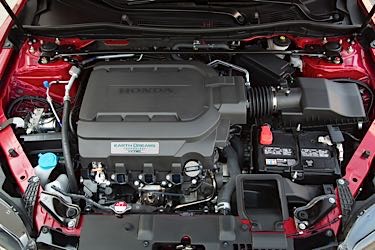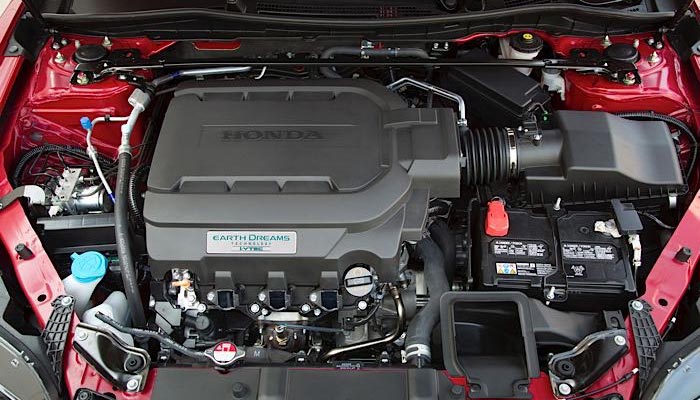 If you are replacing spark plugs on a Honda to solve a misfire problem, you might want to take a look at the original plugs to make sure you are replacing them for the right reasons. Most Honda original equipment spark plugs have a life of more than 100,000 miles thanks to electrodes that contain precious metals like platinum and iridium. If the plugs fail sooner than the recommended interval, first solve any related problems before installing new plugs.
If you are replacing spark plugs on a Honda to solve a misfire problem, you might want to take a look at the original plugs to make sure you are replacing them for the right reasons. Most Honda original equipment spark plugs have a life of more than 100,000 miles thanks to electrodes that contain precious metals like platinum and iridium. If the plugs fail sooner than the recommended interval, first solve any related problems before installing new plugs.
Oil Fouling
Honda and other manufacturers have issued Technical Service Bulletins (TSBs) concerning excessive oil consumption. Most of these problems relate to cylinder deactivation and variable valve timing.
The main culprit with these problems is vacuum generated in the cylinders that sucks engine oil past the rings and into the combustion chamber. On vehicles with cylinder deactivation, the deactivated cylinder has a negative pressure and draws oil droplets in the crankcase past the ring and eventually into the converter. This has happened with some Honda V6 engines.
On some vehicles with variable valve timing (typically on the exhaust and intake cams), the valve timing can produce higher-than-normal vacuum pressures that can suck oil past the rings. This also was the case on some recent Honda models, where the customer would report increased oil consumption that exceeded a quart every 1,000 miles.
While the oil getting past the rings is reason enough for concern, the oil being trapped in the rings is also a problem since it can become carbonized and cause damage to the cylinder walls. This can lead to greater damage and more oil consumption. In some cases, the oil consumption could result in a low-oil condition that causes damage to the bearing surfaces.
The oil consumption problem must be solved first before the spark plugs are replaced, and, in some cases, the converter will also need to be replaced. The most common fix for this problem is new engine management software that needs to be reflashed onto the ECM/PCM, which is designed to reduce negative cylinder pressures. Some manufacturers have also released special splash shields and oil valves to alleviate the issue. These problems may occur on vehicles with as little as 20,000 miles.
Coolant Problems
Internal coolant leaks can also foul a spark plug and cause a misfire. The problem could be a leaking intake manifold or head gasket, and the fouled plug might be localized to one or two adjacent cylinders. The burned coolant leaves deposits on the electrodes and insulator, creating hot spots that could cause pre-ignition and a misfire code being set.
When the plug is pulled for inspection, it might have a chalky appearance on the ground strap and center electrode. Modern coolants do not cause this type of buildup quickly due to the reduction of phosphate, zinc and other additives that can contaminate the catalytic converters.
Unfortunately, it also means that drivers will run a vehicle with a coolant leak for several thousand miles while the plug becomes slowly fouled. In the past, the converter would become clogged and stop the engine before significant damage was caused.
Carbon Deposits
The one thing the modern combustion chamber hates is chaotic turbulent air caused by carbon deposits in the chamber or on the intake valves. Turbulence can cause uneven distribution of the fuel droplets before ignition and lead to a misfire. This is especially true for direct-injection vehicles with lean air/fuel ratios.
The main reason this condition occurs is that fuel and added detergents are not hitting the back of the intake valves. By injecting the fuel directly into the cylinder instead of at the back of the valve, the gasoline and detergents can’t clean the valve and port.
Leaner mixtures and higher combustion pressures can make the problem worse over time. A direct fuel injection motor produces more energy from a given amount of fuel and air than a port fuel injection engine. Today’s engines operate on the razor’s edge between optimal efficiency and a misfire. There is not much room for error, such as with hot spots in the combustion chamber or a worn spark plug.
When a hot spot or suboptimal flame front is created due to turbulent air, the amount of unburned fuel in the combustion chamber increases. When the valve opens during the intake stroke, it might come in contact with these byproducts. However, unlike in the exhaust valve, the related gases are not hot enough to burn the byproducts off.
When the intake valve goes into the combustion chamber (regardless of whether it is port fuel injected or direct injected), the valve is exposed to combustion byproducts that can stick to its neck. If the previous combustion cycle was less than optimal, the intake valve is exposed.
No matter where or how the carbon deposits develop, the chaotic air will prevent the spark plug from igniting the best possible flame front in the cylinder. At that point, the spark plug might become fouled or become damaged due to detonation.
Honda Service Tips
If you get a Honda in for a timing belt replacement between 90,000 and 115,000 miles, recommend replacement of the plugs as part of the service. It is better to be proactive now than to have the customer come back with a misfire code.
When you are doing the timing belt and also replacing the water pump, you will notice that some engines have the crank angle sensor mounted below the pump. If the pump had a slow leak or the previous tech drowned the pump in coolant, be aware that you might get a misfire or a crankshaft position sensor code.














